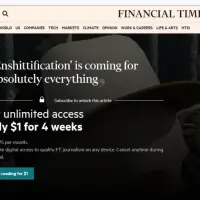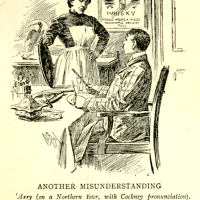 2019 was the busiest year ever on A Pilgrim in Narnia! Though I reduced the number of posts a little (to just over 2/week), there were more than 180,000 hits! This year’s top posts have some intriguing connections. I have two guest posters on the list–the first time a guest post has cracked my top 5. Besides thoughts about the Tolkien biopic, Philip Pullman and Susan Pevensie link most of the top posts, and three of the top four posts have to do with questions of gender (and so does the 7th most popular post, on C.S. Lewis in Time magazine in 1947). If there is a theme that haunts behind the top posts as a group, it may be the tensions between what it means to be a good reader (and fan) and the challenges of our cultural moment. I hope you enjoy these great 2019 posts and follow along as we continue to discuss great books, imaginative authors, and critical ideas in 2020.
2019 was the busiest year ever on A Pilgrim in Narnia! Though I reduced the number of posts a little (to just over 2/week), there were more than 180,000 hits! This year’s top posts have some intriguing connections. I have two guest posters on the list–the first time a guest post has cracked my top 5. Besides thoughts about the Tolkien biopic, Philip Pullman and Susan Pevensie link most of the top posts, and three of the top four posts have to do with questions of gender (and so does the 7th most popular post, on C.S. Lewis in Time magazine in 1947). If there is a theme that haunts behind the top posts as a group, it may be the tensions between what it means to be a good reader (and fan) and the challenges of our cultural moment. I hope you enjoy these great 2019 posts and follow along as we continue to discuss great books, imaginative authors, and critical ideas in 2020.

 #5. What does Philip Pullman’s Daemon Voices have to say about the Inklings? Guest Post by Wesley Schantz click here
#5. What does Philip Pullman’s Daemon Voices have to say about the Inklings? Guest Post by Wesley Schantz click here
With the release of more books from the His Dark Materials (Golden Compass) universe, and with some unusual statements he has made about Lewis and Tolkien, there has been an increased interest in Philip Pullman. In this review, Wesley Schantz gives us a strong conversation about Pullman’s collection of essays, Daemon Voices. Wes provides smart analysis, lengthy quotations, and some beautiful images to set the tone of the conversation. I don’t know if Daemon Voices will having the staying power of other great writers who write about writing, like Madeleine L’Engle in Walking on Water, Stephen King in On Writing, Annie Dillard in The Writing Life, Margaret Atwood in Negotiating with the Dead and In Other Worlds, Ursula K. Le Guin in The Language of the Night and Steering the Craft, and in shorter pieces like these by Robert Heinlein and Octavia Butler. It is certainly, though, a book worth reading for people who love Pullman’s fiction and who want to develop their own storytelling and literary-critical skills.

 #4. Girls, Boys, and the Maps in Their Heads: A Reflection on Narnia click here
#4. Girls, Boys, and the Maps in Their Heads: A Reflection on Narnia click here
In early 2019 I was writing a chapter in my PhD thesis about C.S. Lewis and gender. The chapter ended up being two chapters, a call and response on questions that were really intimate to Lewis and his writing. Writing these ideas, I was bringing together years of writing and research on ideas and texts that are really intimate to me. At the same time, I was teaching Narnia to smart undergraduate students who drew rich things from the Chronicles but also brought their own stories to the texts. Needing to write out my ideas in a more personal way, I began 2019 with this critical essay about gender roles in Narnia. “Girls, Boys, and the Maps in Their Heads: A Reflection on Narnia” was read well, with 170 comments (some of which included some heat). Quite frankly, I struggled with the response to his post on the blog and in social media, but it remains important to me as I try to shape good readership of texts among in the classroom and in public conversation.

 #3. My Defiant Appreciation of the Biopic Tolkien click here
#3. My Defiant Appreciation of the Biopic Tolkien click here
2019 saw the release of the Tolkien biopic, to mixed reviews. I was writing a guest post for Forefront on the film, and joined Diana Glyer and William O’Flaherty for a podcast, so I was doing a lot of thinking and reading about the film. I am a deeply invested Tolkien fan, a reader of as much of his writing as I can get, a secret lover of his languages, and fascinated with his life. I loved Peter Jackson’s LOTR films, but I also recognize the weaknesses in the Hobbit adaptations (see here, here, and here). As a fan, I love great adaptation and cringe at bad interpretation.
And yet, I want to live in the middle space between hating everything that isn’t perfect and loving everything with Tolkien’s name attached to it. At one point, I was called immoral because I gave Peter Jackson some credit! So I found myself choosing to be open to the Tolkien biopic, knowing it would have weaknesses, but also recognizing that it was not a critical biography or documentary, but a cinematic interpretation of his young adulthood. The result was “My Defiant Appreciation of the Biopic Tolkien,” an article that captured what I loved about the film. Readers were gracious to my approach, and director Dome Karukowski called it “my favourite to rule them all”–a neat high point in 2019.
 #2. 8 Questions about the Problem of Susan Narnia Debate, or How to Read Well click here
#2. 8 Questions about the Problem of Susan Narnia Debate, or How to Read Well click here
I have been fascinated about Susan Pevensie for some time. I have never felt reconciled to her fate in The Last Battle, but I have never felt that the hyperbolic response was warranted. Though the idea is foolish, I consistently hear otherwise good readers say, “Did Lewis send Susan to hell for wearing lipstick?” Part of this is the peculiarly American nature of Narnian readership, and some of it is bound up in the unusual ways that Lewis plays with gender and social roles–some of which is strangely innovative, while other bits are uncomfortable and antiquated. Since our #1 post of 2019 was about Susan, and the post was quite widely received, I decided to lay out questions I think we have to ask to read Susan (and other ideas about gender in literature) well. These questions are about definitions, an author’s biography, our space as readers, and some theoretical suggestions about how good reading can work.
Because I’m really challenging a trend in scholarship in gender while in the same way supporting that way of reading, I was surprised that “8 Questions about the Problem of Susan Narnia Debate, or How to Read Well” was read more than a thousand times. In the end, I want to argue that any approach to analyzing a text has to be deeply invested in a close reading of the text and clarity about the questions we bring to the stories we love–and even the ones we love to hate.

 #1. How do you Solve a Problem like Susan Pevensie? Narnia Guest Post by Kat Coffin click here
#1. How do you Solve a Problem like Susan Pevensie? Narnia Guest Post by Kat Coffin click here
This is the only time that a guest post has topped a yearly list, and Kat Coffin’s strong post has actually cracked the Top 10 of all time on A Pilgrim in Narnia! After some conversation on Twitter, and based on an older social media post, I asked Kat to put together this challenge to how we think about Susan Pevensie. Early last year, I wrote a couple of posts about Lewis and gender, including “Girls, Boys, and the Maps in Their Heads: A Reflection on Narnia“–our #4 2019 post. As I was writing a chapter about Lewis and gender at the time, I followed up with “8 Questions about the Problem of Susan Narnia Debate, or How to Read Well“–the #2 post of 2019–and a later “Bibliography on C.S. Lewis and Gender,” a resource for my “C.S. Lewis, Gender, and The Four Loves: An Open Class.”
Many of us have feelings about the way that Lewis treated Susan in The Last Battle. I find Lewis’ treatment of Susan inelegant, and inconsistent with the feeling of Narnia. But those who reduce her treatment to “being sent to hell for being a young woman” are misreading the text, I think–making Susan what Kat calls the “most maligned and misinterpreted of Pevensies.” In this article, Kat carefully and briefly challenges many misreadings of the text by looking closely at how Susan’s character is developed. Kat doesn’t blindly defend Lewis, but challenges hasty readings that cause readers to miss some depth about gender in Lewis’ writings.
You can continue to follow Kat’s work on Twitter, @KatinOxford.
 Finally, a funny note. The 6th most popular post of 2019 was actually my April Fools Day prank post, which you can see here (with apologies to Taylor Swift, who is indeed very cinematic and is friendly to me whenever we bump into each other at galas). That post was way more work than I intended it to be, but a good nonsense deal of fun in a difficult period for me. Thanks everyone for joining me in the joke!
Finally, a funny note. The 6th most popular post of 2019 was actually my April Fools Day prank post, which you can see here (with apologies to Taylor Swift, who is indeed very cinematic and is friendly to me whenever we bump into each other at galas). That post was way more work than I intended it to be, but a good nonsense deal of fun in a difficult period for me. Thanks everyone for joining me in the joke!























